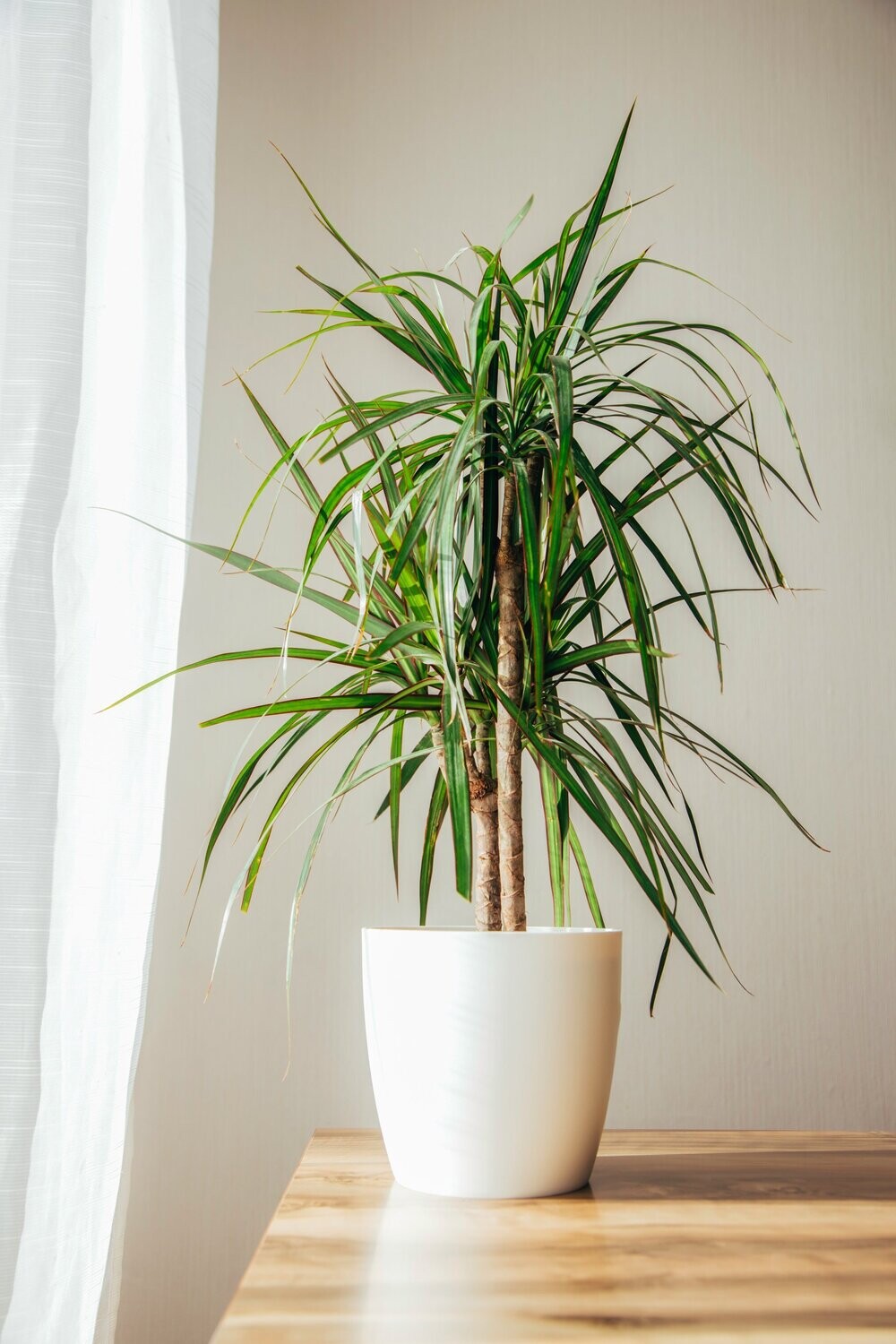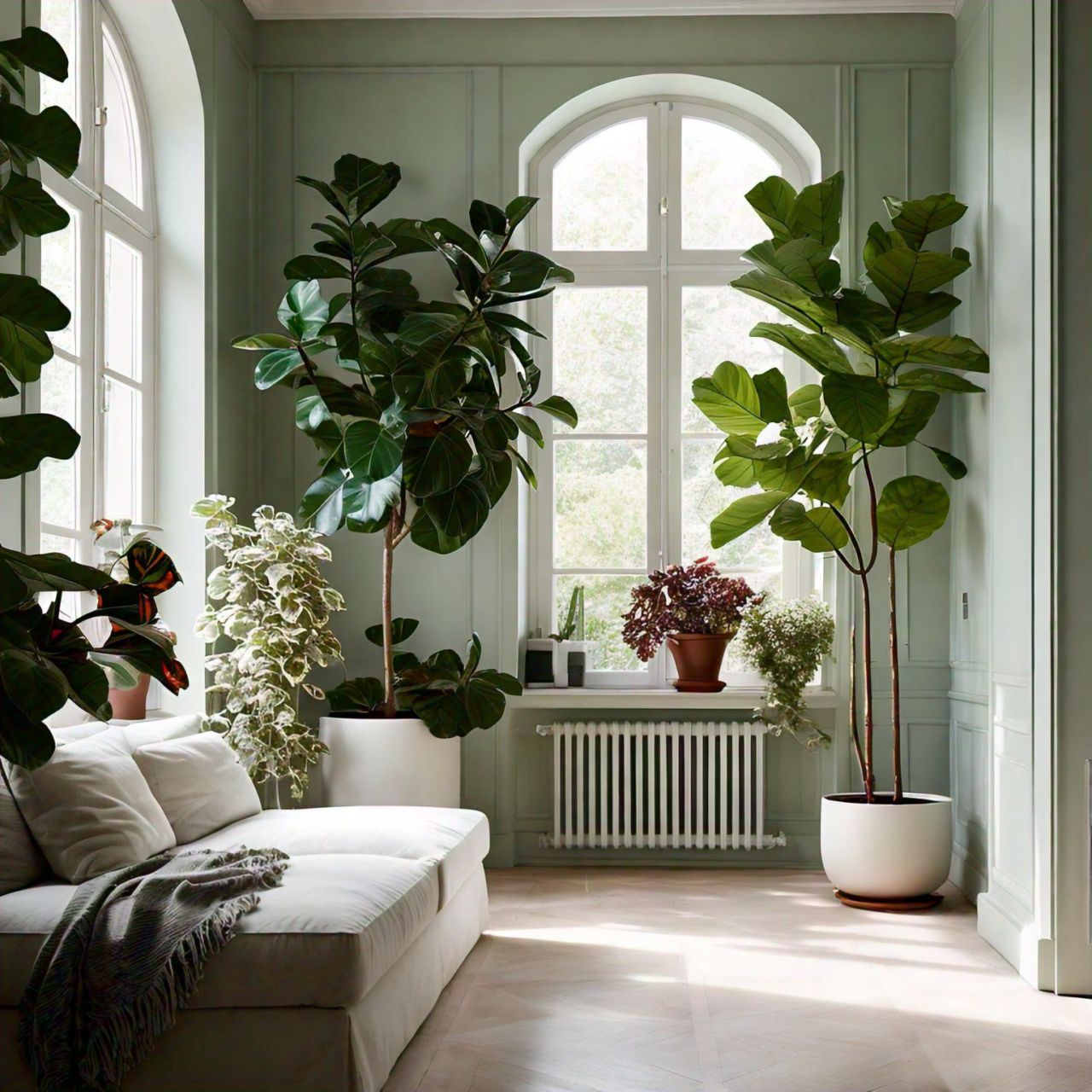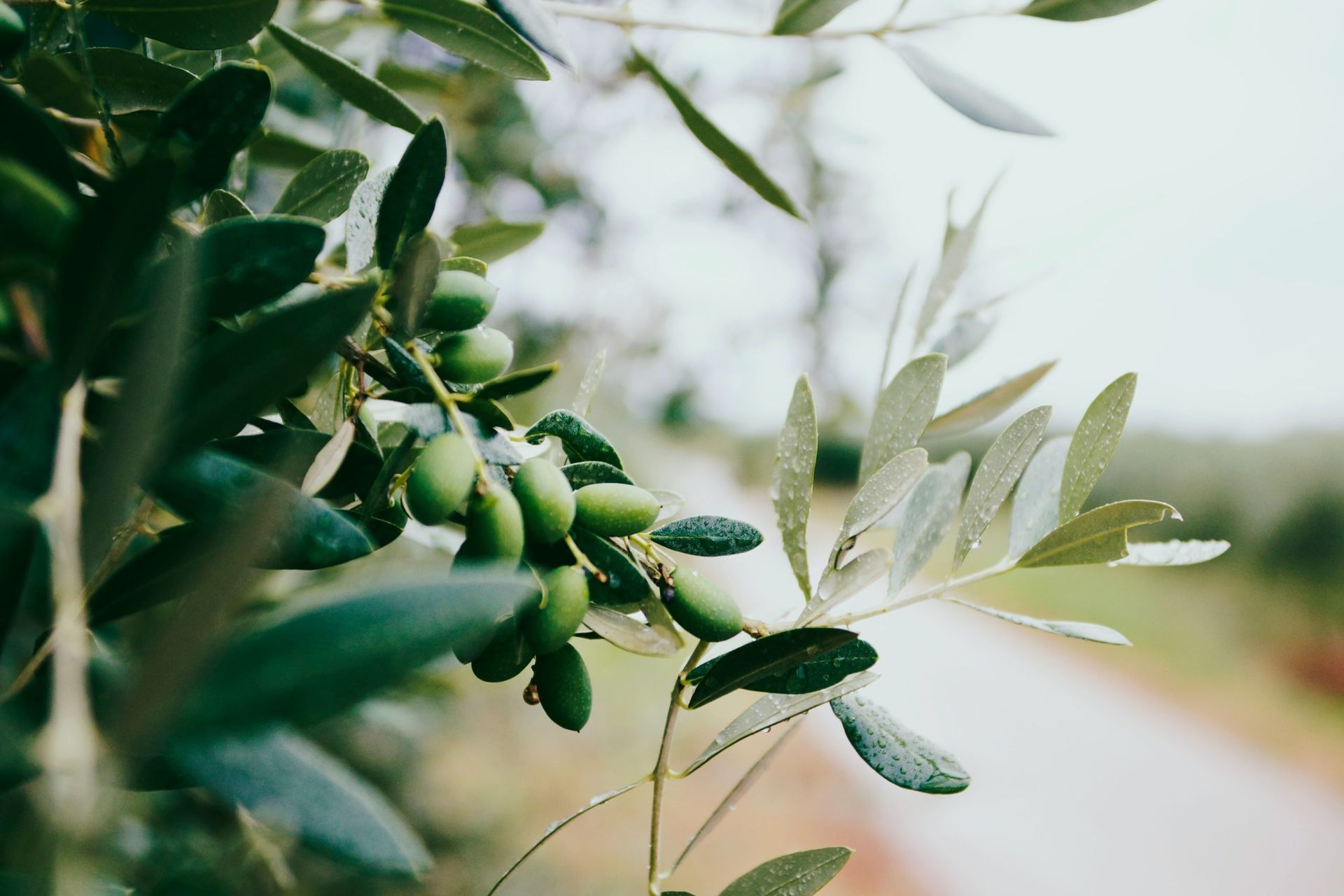Dracaena Marginata Dragon Tree 250mm
Botanical Name: Dracaena Marginata
Description:
The Dragon Tree is known for its unique shape with green sword-like, red-edged leaves. With great tolerance for multiple kinds of weather and living conditions, the Dragon tree is favorable for indoor spaced in office buildings, and shopping malls but can also be used as an everyday houseplant. In fact, the plant also grows well outdoors with white flowers under the right conditions.
Size:
Pot size: 250mm pot
Width: 50cm
Height: 1.1-1.2M including pot
Weight: 5kg
Care Guide:
1. Lighting
• Ideal Light: Bright, indirect light is best. A spot near a window with filtered sunlight will keep your plant happy.
• Low light: While Dragon tree can tolerate low light, it will grow more slowly and becomes leggy
• Avoid direct sunlight: Prolonged exposure to direct sunlight can scorch the leaves, causing brown or yellow spots, especially on the tips.
2. Watering
Dragon trees like consistently moist soil, but they don’t like to sit in water.
• When to water: Water when the top 1-2 inches of soil feels dry. Water thoroughly, allowing water to drain out of the bottom of the pot.
In the warmer months: water 1-2 times a week.
In winter months: water less frequently, every 10-14 days.
• Note: Make sure your pot has good drainage to prevent waterlogging. Overwatering can cause root rot, so it’s important to find a balance.
3. Temperature
Dragon trees thrive in warm indoor conditions and prefer temperatures between 18-27°C.
Dragon trees are sensitive to cold drafts or extreme heat, so keep them away from air conditioners, heaters, or windows.
4. Humidity
Dragon trees are not overly picky about humidity, but they do better in moderate humidity.
• Ideal humidity: 40-50% works well. It can also adapt to drier conditions
• Increase humidity: If your home is very dry, especially in winter, you can mist the leaves lightly, place the plant on a humidity tray (a shallow dish filled with water and pebbles), or using a humidifier.
5. Soil
• Ideal soil: Use a rich, well-draining potting mix. You can mix in some perlite or orchid bark to improve drainage. A general-purpose houseplant mix will work fine as long as it drains well.
• pH: Slightly acidic to neutral soil (pH 6.0–7.5).
6. Fertilizing
• When to fertilize: Feed your plant every 4-6 weeks during the growing season (spring and summer) using a balanced, water-soluble fertilizer or a slow-release fertilizer.
• Avoid: Fertilizing during the winter months when the plant’s growth slows down. Excessive fertilization can lead to salt buildup in the soil, harming the roots.
7. Repotting and Maintenance
• Repotting : Repot in spring when the plant outgrows its current pot or when the roots become root-bound, which could be every 2-3 years. Choose a pot that’s 1-2 inches larger in diameter than the current one. Ensure the pot has good drainage.
• Pruning: You can prune the plant to remove dead or yellowing leaves, or to control its size and shape. If the plant becomes too tall or leggy, you can cut back the top part of the stem. The cut stem will often sprout new growth.
8. Common Issues
Here are a few common problems you might encounter with Dragon trees:
• Yellowing leaves: This is typically a sign of overwatering, root rot, or nutrient deficiency.
Check your watering schedule and ensure the plant is in well-draining soil. Yellowing leaves can also occur from low light or if the plant is stressed from temperature fluctuations.
• Brown leaf tips: This can be caused by low humidity, over-fertilizing, or underwatering. Ensure the plant is in a moderately humid environment, avoid over-fertilizing, and water consistently.
• Leaf drop: Leaves can drop if the plant is stressed by changes in temperature, overwatering, or a sudden change in light conditions. Keep the plant in a stable environment.
• Leggy growth: If the plant is not getting enough light, it may become leggy with long, spindly stems. Move it to a brighter spot with indirect light.
• Pests (like spider mites, aphids, or scale): Regularly inspect the plant, and treat any infestations promptly with insecticidal soap or a natural remedy like neem oil.
Pet-friendly : the Dragon Tree is toxic to pets and humans, and should be kept away from animals.
ADDRESS
49 Locher Avenue
Reservoir
VIC 3073
HOURS OF OPERATION
- Mon - Tue
- Closed
- Wed - Sun
- -






